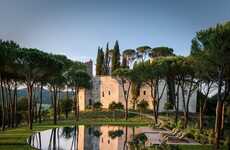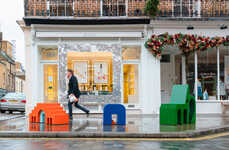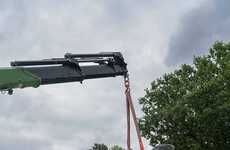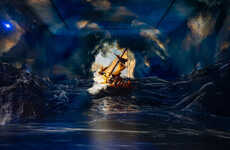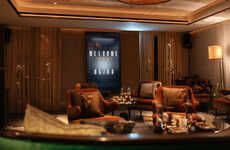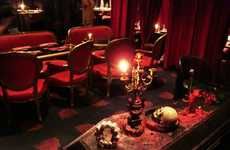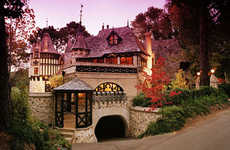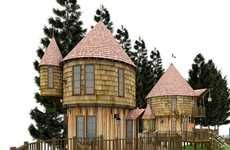
Historic European Castle Grounds Become Contemporary Art Galleries
sara Harari — April 2, 2009 — Art & Design
References: artnet
Castles used to be seen in a certain light, but now give off a sense of defensiveness and financial disparity. The owners of these magnificent structures, however, are looking to gain relevancy once again as they have discovered that a castle, with its outrageous grandeur and extreme architecture, is a provocative frame for the gestures and inclinations of modern and contemporary art.
Mollie Dent Brocklehurst, owner of Sudeley Castle, embarked on a series of installations of new art on its ample grounds while she was working at Gagosian Gallery in London and looking to bring the energy of the art to a certain landscape. Placing new works on the grounds grew into commissions made exclusively for the site, a development that thrills Brocklehurst as she says it has brought an entirely new audience to this sort of art.
A similar vision has started to transform the landscape at Lismore Castle in Ireland. Works on the outside grounds include pieces from Franz West and Richard Long. Inside the castle, a ruined wing was remodeled and hung with works chosen by internationally distinguished critics and curators.
William Burlington, son of the current Duke of Devonshire and owner of Lismore Castle, says to Vogue “The galleries are quite a surprise for a lot of people who come across them unexpectedly when wandering through the garden- we wanted the entrance to be subtle, almost hidden- and it’s good to see the kind of cross-fertilization that they bring. The garden people find themselves looking at modern art they never expected to see, while the art crowd find themselves staring in amazement at some huge, ancient magnolia tree in flower.”
Mollie Dent Brocklehurst, owner of Sudeley Castle, embarked on a series of installations of new art on its ample grounds while she was working at Gagosian Gallery in London and looking to bring the energy of the art to a certain landscape. Placing new works on the grounds grew into commissions made exclusively for the site, a development that thrills Brocklehurst as she says it has brought an entirely new audience to this sort of art.
A similar vision has started to transform the landscape at Lismore Castle in Ireland. Works on the outside grounds include pieces from Franz West and Richard Long. Inside the castle, a ruined wing was remodeled and hung with works chosen by internationally distinguished critics and curators.
William Burlington, son of the current Duke of Devonshire and owner of Lismore Castle, says to Vogue “The galleries are quite a surprise for a lot of people who come across them unexpectedly when wandering through the garden- we wanted the entrance to be subtle, almost hidden- and it’s good to see the kind of cross-fertilization that they bring. The garden people find themselves looking at modern art they never expected to see, while the art crowd find themselves staring in amazement at some huge, ancient magnolia tree in flower.”
Trend Themes
1. Castle Art Exhibits - Historic European castles are being transformed into contemporary art galleries, creating innovative art exhibit opportunities in unconventional spaces.
2. Site-specific Art Installations - By commissioning site-specific art installations, castle owners are creating unique experiences for visitors and opening the door to more experimental uses of space in heritage sites.
3. Hidden Galleries - By creating subtle and hidden entrances to art galleries in castle gardens, heritage site owners are allowing visitors to unexpectedly discover and engage with modern art.
Industry Implications
1. Art - Artists and curators have a new opportunity for creating and showcasing large-scale, site-specific art installations in historic castle sites.
2. Tourism - Transforming heritage sites into contemporary art galleries creates an innovative tourism experience for visitors, attracting new audiences and encouraging repeat visits.
3. Heritage Preservation - By using castles for modern art exhibitions, heritage sites are able to attract new audiences and bring relevance to historic sites, contributing to the preservation of cultural heritage.
1
Score
Popularity
Activity
Freshness

